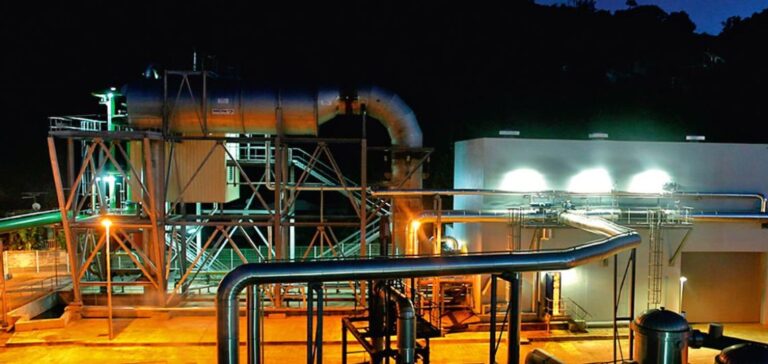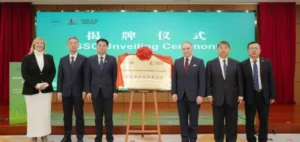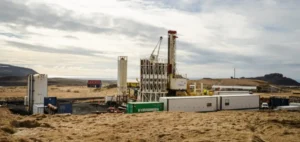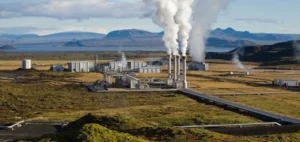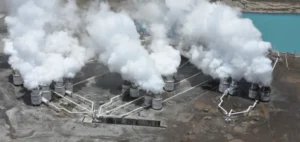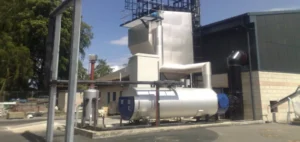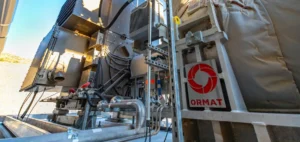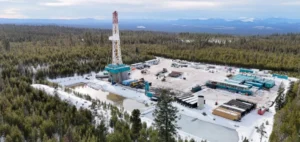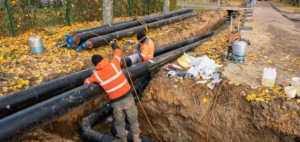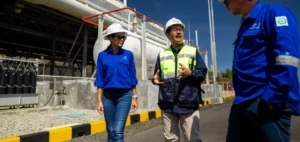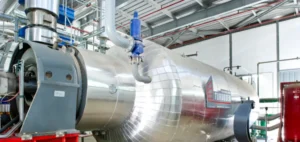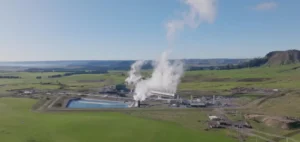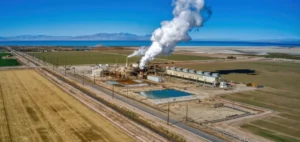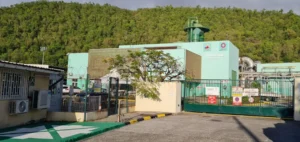Under the plant, at less than one meter, the water is close to 100°C: thanks to exceptional natural conditions, the geothermal plant of Bouillante, in Guadeloupe, wants to accelerate the share given to geothermal energy in the production of electricity, to reach 20% by 2035.
In operation since the 1980s, the plant, which was bought in 2016 by Israeli-American Ormat, is the only geothermal power generation unit on French territory. “This is mainly because we have a very hot water supply at a shallow depth,” explains the site director, François Joubert, due to the volcanic activity in the area. “For such a temperature, on the hexagonal ground, it would be necessary to go down to 5.000 meters”, assures the industrialist.
The plant, whose sulphurous fumaroles sometimes invade the town of Bouillante in which it is installed, exploits the hot water of the fault (from 60% sea water and 40% rainwater) present on both sides of the Guadeloupe archipelago. The capture is done by wells, brings up the hot water, separates the steam from the water. “The steam turns a turbine connected to an alternator that produces electricity, which is fed back into the EDF network,” explains François Joubert. The remaining water is reinjected into the water table or discharged into the sea, which “creates hot water baths very popular with tourists,” smiles the director.
Since the beginning of April, a new well has been completed and will start production by 2025. It replaces an older facility and is expected to “double its capacity” to an additional 10.5 megawatts, according to the plant manager. In addition, the project for a third production unit should increase the plant’s production capacity and the presence of geothermal energy in the local energy mix to 20%, according to Ormat.
But at the moment the “project has not been completed because of operating difficulties”, “land problems” in particular, according to the Ademe. “It is difficult to indicate a real potential power for this site,” the same source said. In a scenario said to be “realistic” by its instigators, the multi-year energy program of Guadeloupe envisages a geothermal share of 14% (75 MW) in the electricity mix, the remainder being distributed between biomass via a thermal power plant recently converted from coal to wood pellets (43%), wind power (24%), photovoltaic (17%) and hydroelectric power (2%) from 2028.
At present, more than 75% of the local electricity is produced by diesel and oil-fired power plants.
Clean energy
“The advantage of geothermal energy is that it is a basic energy (not intermittent, editor’s note), clean, decarbonized and especially less expensive to produce than others,” says Ademe Guadeloupe. Electricity from geothermal energy is sold to EDF at about 40% less than other energies, according to the industry. Its disadvantage is the length of the procedures, which depend on the mining code.
In Guadeloupe, two other projects exist but could see the day only in a good “ten years”, according to concordant sources. Uncertainty about the presence of the resource, which is only known precisely after drilling, hinders many projects. However, drilling deep wells requires an investment of several million euros.
However, knowledge is progressing: a study completed in early 2023 has highlighted a method of magneto-telluric sensors on land and sea “innovative to make more reliable” the pre-drilling forecast, explains Ywenn de la Torre, director of BRGM (Bureau of Geological and Mining Research) Guadeloupe. An innovation on which the whole of the Caribbean is looking, driven by the prospect of reducing its dependence on imported fossil fuels and interconnection capacities between the islands, which were previously non-existent.
There is a potential “very interesting whose exploitation would allow to reach installed powers of about 300 MW in the next years”, according to the institutional site Guadeloupe energy. In March 2022, the first steering committee of the Caribbean center of excellence for geothermal energy, to be installed in Guadeloupe, was held.


